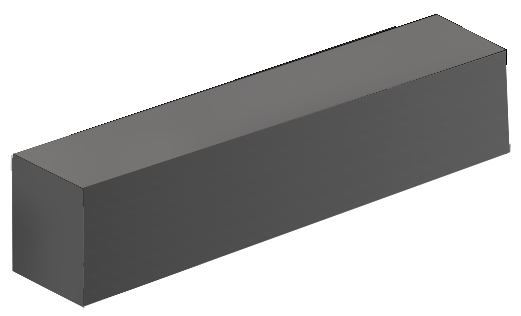Modes of Vibration of Simply Supported Beam Under Flexure
Objective:
To study the modes of vibration of simply supported beams under flexure.
Apparatus used:
Simply supported beam


Enter the length of beam, L (in meters) :
*Enter the breadth of beam, B (in meters) :
*Enter the depth of beam, D (in meters) :
*Enter the area of beam, A (in square meters) :
*Enter the moment of inertia of beam, I (in meters) :
*







Enter the density of beam (in kg/m3) :
*Enter the Young's modulus of elasticity E, of beam (in N/m2) :
*Select the value of n:
*Frequency,fn (in Hz) :

Repeat from step 2 for other two specimen.
Note: Enter different values of length for different no. of specimen
Enter the length of beam, L (in meters) :
*Enter the breadth of beam, B (in meters) :
*Enter the depth of beam, D (in meters) :
*Enter the area of beam, A (in square meters) :
*Enter the moment of inertia of beam, I (in meters) :
*







Note: Enter different values of Young's modules of elasticity (E) for different no. of specimen
Enter the density of beam (in kg/m3) :
*Enter the Young's modulus of elasticity E, of beam (in N/m2) :
*Select the value of n:
*Frequency,fn (in Hz) :

Repeat the whole experiment for last one specimen.
Note: Enter different values of length for different no. of specimen
Enter the length of beam, L (in meters) :
*Enter the breadth of beam, B (in meters) :
*Enter the depth of beam, D (in meters) :
*Enter the area of beam, A (in square meters) :
*Enter the moment of inertia of beam, I (in meters) :
*







Note: Enter different values of Young's modules of elasticity (E) for different no. of specimen
Enter the density of beam (in kg/m3) :
*Enter the Young's modulus of elasticity E, of beam (in N/m2) :
*Select the value of n:
*Frequency,fn (in Hz) :

Repeat the whole experiment for last one specimen.
| Length : | L1 : | L2 : | L3 : |
| Frequency : | F1 : | F2 : | F3 : |
| Elasticity : | E1 : | E2 : | E3 : |
| Frequency : | F1 : | F2 : | F3 : |
Thank You for performing experiment, to repeat experiment click Restart button.